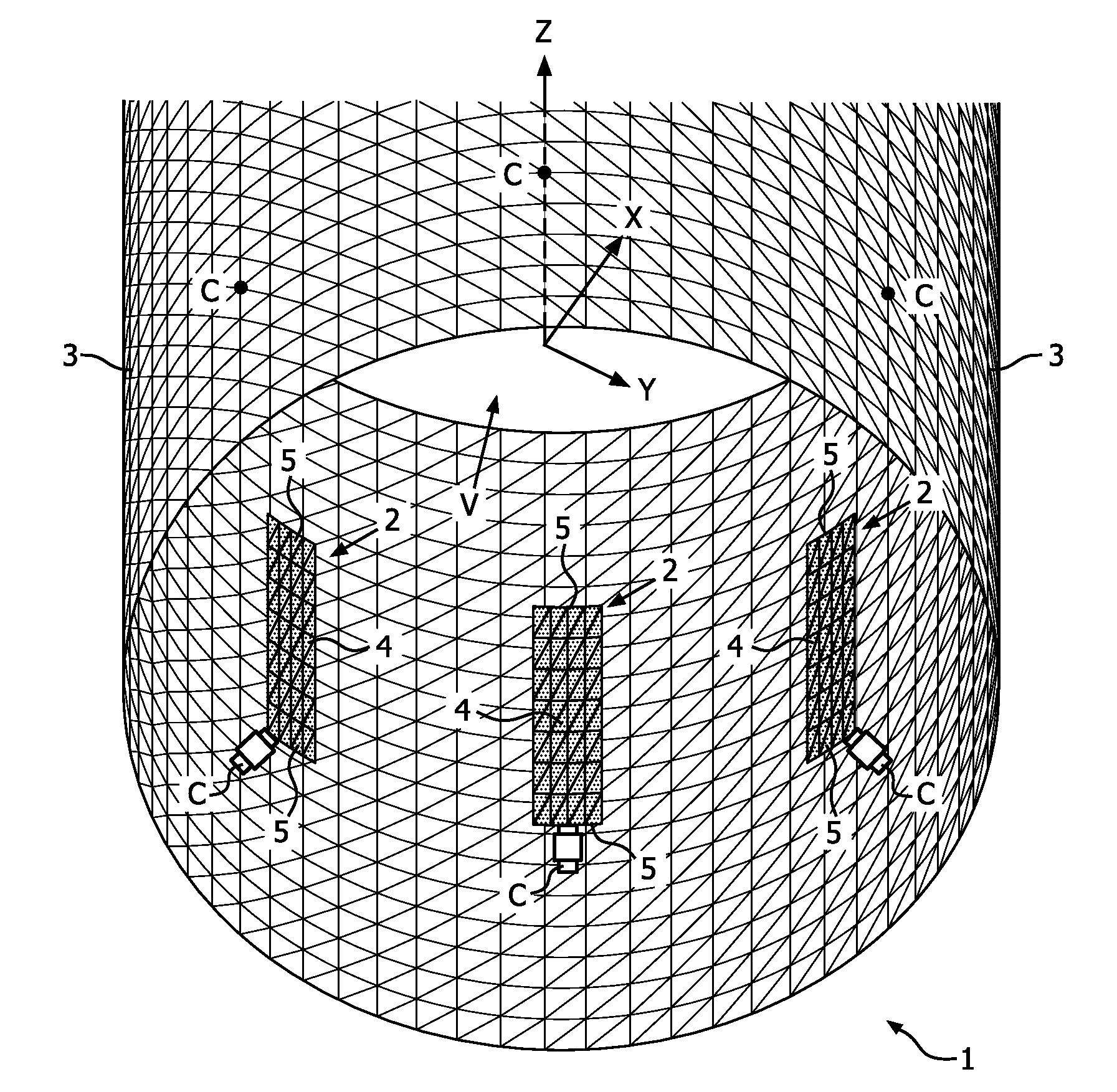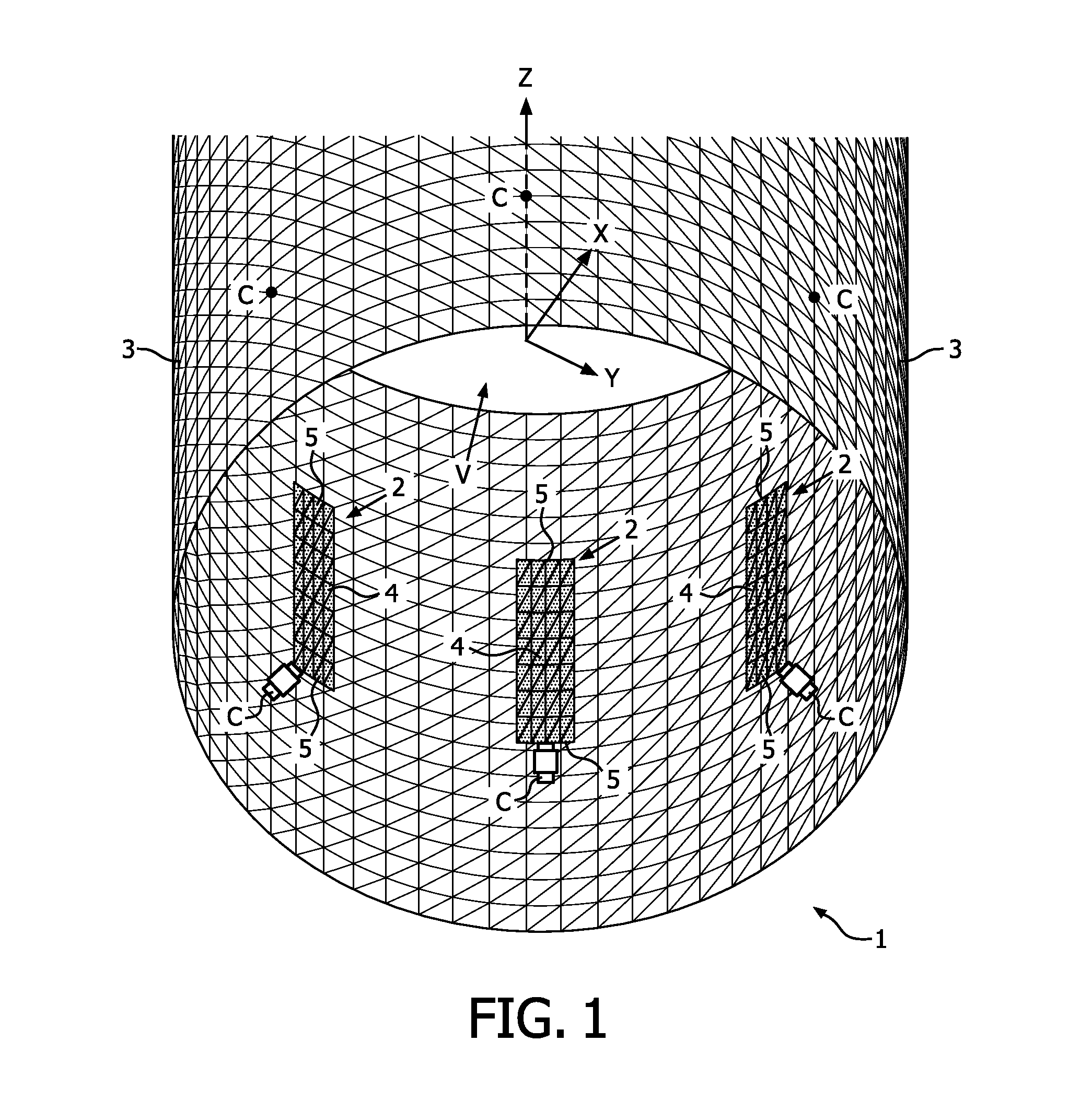Transverse-electromagnetic (TEM) radio-frequency coil for magnetic resonance
- Summary
- Abstract
- Description
- Claims
- Application Information
AI Technical Summary
Benefits of technology
Problems solved by technology
Method used
Image
Examples
Embodiment Construction
[0028]FIG. 1 shows a conventional transverse-electromagnetic (TEM) radio-frequency (RF) coil 1C for a magnetic resonance system, such as an MRI system. The conventional TEM coil 1C comprises a plurality of TEM coil elements 2 arranged within and encompassed by an RF shield 3 in the form of a cylindrical screen which functions as an RF ground for the coil 1C. A central axis of the cylindrical RF screen 3 corresponds to the z-axis of the coil 1C, as denoted by the Cartesian coordinates shown in FIG. 1. Each of the plurality of TEM coil elements 2 comprises an elongate coil strip section 4, and the TEM coil elements 2 are arranged such that the strip sections 4 are essentially parallel and spaced apart from one another at regular intervals around the z-axis inside the RF screen 3. Because the RF screen 3 in this example is circularly cylindrical, all of the strip sections 4 of the TEM coil elements 2 have basically the same radial spacing from the z-axis of the coil 1C. In this embodim...
PUM
 Login to View More
Login to View More Abstract
Description
Claims
Application Information
 Login to View More
Login to View More - R&D
- Intellectual Property
- Life Sciences
- Materials
- Tech Scout
- Unparalleled Data Quality
- Higher Quality Content
- 60% Fewer Hallucinations
Browse by: Latest US Patents, China's latest patents, Technical Efficacy Thesaurus, Application Domain, Technology Topic, Popular Technical Reports.
© 2025 PatSnap. All rights reserved.Legal|Privacy policy|Modern Slavery Act Transparency Statement|Sitemap|About US| Contact US: help@patsnap.com



